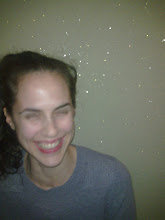Watching the movie, I found myself indifferent towards the characters and somewhat antagonistic. Thinking about it later, I realized I especially didn’t enjoy that the dialogues so bluntly tell the audience: "there are things we're talking about that you still can't understand. They're meant to intrigue you. It's a secret for now, you'll understand later". It's always a challenge to manage how much you reveal to the audience and when to reveal it, and I felt that in "Rachel Getting Married" I was too aware of this mechanism being pulled.
What I'm getting at here, is that I didn't experience any intellectual exhilaration just knowing that the music I hear is the music the characters hear. And I guess it annoyed me that that's even an option, to not enjoy the movie, and at the same time marvel at the music.

Which brings me to "the Royal Tenenbaums" (Wes Anderson, 2001) – another family centered movie, hence on my watch list. And another movie that leaves me antagonistic, today even more than when I watched it for the first time. The reason for the antagonism here is the feeling of self Indulgence that's present on every frame; the feeling that the art and costumes replace emotional depth; the fact that some of the people I know who love this film lack emotional depth themselves. But most of all it's the fact that I didn't care what happens next, and was willing to stop the DVD at any minute. I hate the term "love it or hate it" artwork, but I guess it applies on this film, so maybe I love this term after all.

Anyway, Wes Anderson debates are so 1834. This post is just an excuse for me to show clips from "Zatoichi" (Takeshi Kitano, 2003). "Zatoichi" is the story of a blind masseur and former samurai, an old woman who lets him sleep at her house, and 2 geishas (a brother and a sister), who are chasing after the killers of their parents. This is my example for form and content reinforcing one another, instead of annulling. This movie has both emotional depth, and great story and characters, as well as wonderful use of music.
First, let's go back to this scene, in which the soundtrack is a harmony of diegestic sounds (men building a house) and non-diegestic music:
And I'll leave you with the ending scene of "Zatoichi": the mob tap-dance. After you go through the movie's emotional journey, watching this scene can be truly cathartic (Or not, if we learned anything from this post). How beautiful is the bit where the adult brother and sister become young again for a few seconds?









No comments:
Post a Comment